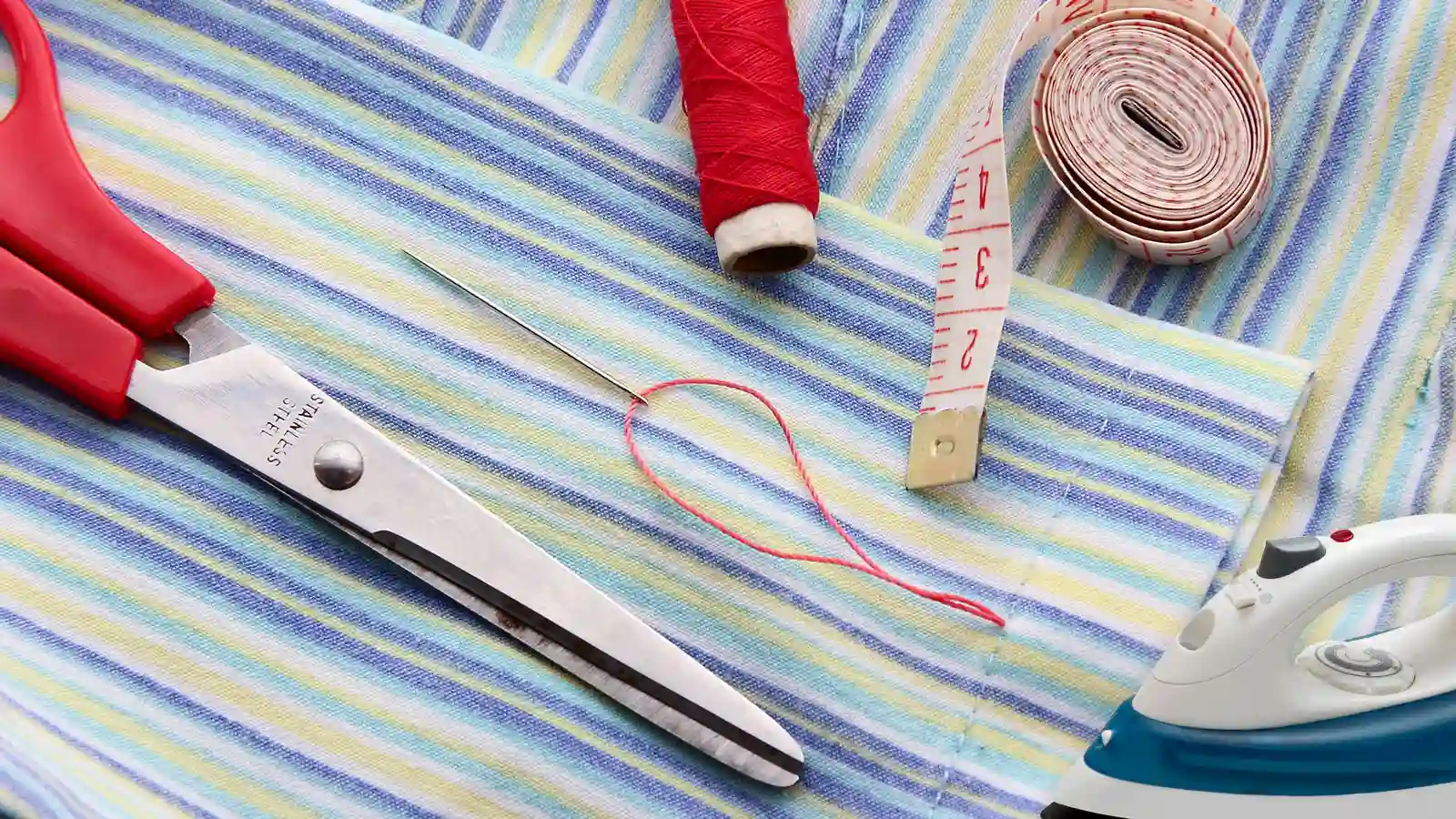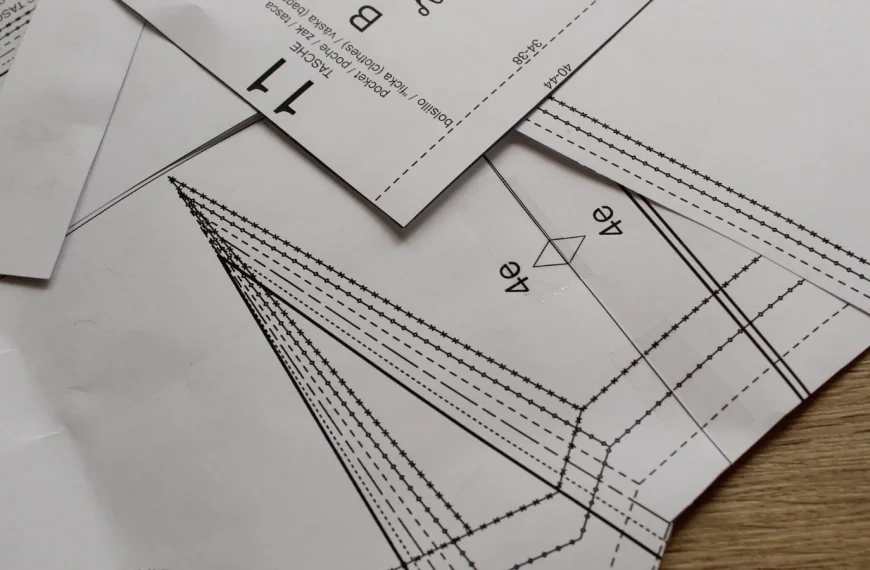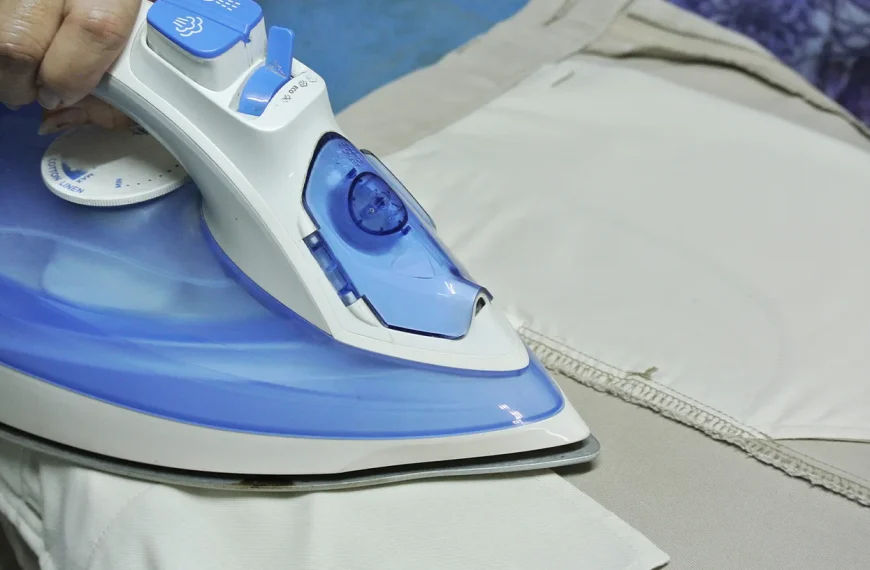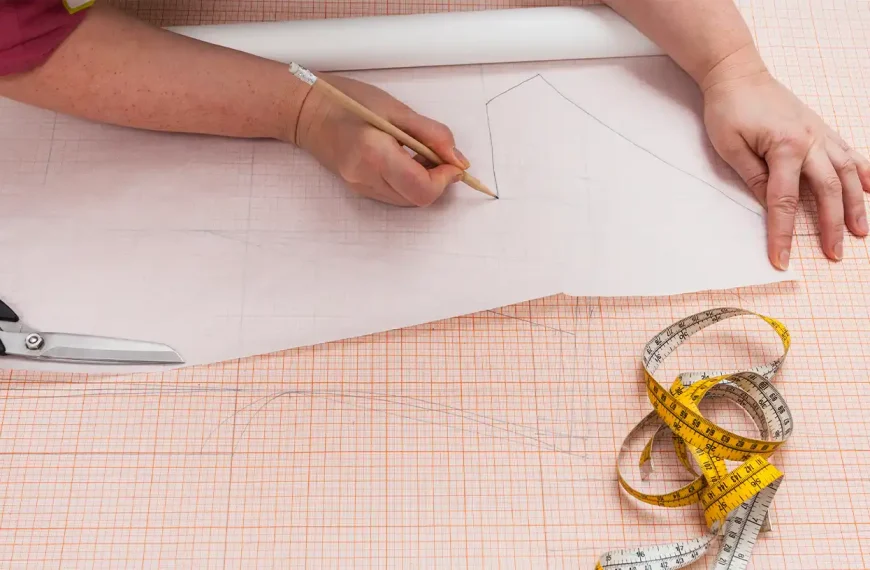Before you start your next sewing project, it’s crucial to understand that preshrinking fabric often prevents unwanted surprises after the first wash. Preshrinking is essential, especially for natural fibers like cotton and wool. They are prone to shrinkage.
Each type requires specific prewashing methods to prevent significant shrinkage. Adopting the proper technique ensures that any fusible interfacings adhere correctly and your finished garment maintains its intended size. Avoid common mistakes, such as using high heat in the dryer, which can lead to uneven shrinkage.
Proper preshrinking ensures that your sewing projects are long-lasting and fit correctly.
Key Takeaways
- To choose the appropriate preshrinking method, identify the fabric type.
- Wash and dry natural fibers in a gentle cycle with mild detergent to minimize shrinkage.
- Use low heat settings when machine-drying fabrics. Doing so prevents excessive shrinkage and maintains fabric integrity.
- For wool and delicate synthetic fabrics, consider steam ironing, hand washing, and air drying to control shrinkage.
- Before preshrinking, test for colorfastness to ensure colors do not bleed, especially in vibrant or dark-colored fabrics.
Understanding Fabric Shrinkage
Fabric shrinkage varies depending on the fiber type and weaving process. It will affect your final garments or projects. Preshrinking is critical to reduce these changes and ensure that your fabric behaves as expected.
Causes of Fabric Shrinkage
To understand why your clothes might shrink after a wash, it’s crucial to explore the causes of fabric shrinkage, including fiber type and the weaving process.
Natural fibers like cotton, linen, and wool are especially prone to shrinking. Unlike synthetic fibers, their structure and properties make them more susceptible to changes when exposed to water and heat.
The fabric’s weave also significantly influences its shrinkage. Tighter weaves generally lead to less shrinkage.
Effects of Shrinkage on Finished Garments or Projects
If you don’t preshrink your fabrics, especially those made from natural fibers, you’re in for a surprise. After washing, your sewing project could end up smaller, throwing off the fit entirely. Imagine putting hours into a project only to find it’s too tight or too short because of shrinkage.
Not preshrinking can also lead to distorted seams and puckering, making your garment look misshapen.
Importance of Preshrinking
Preshrinking your fabric ensures your garments keep their size and shape after washing. By preshrinking, you’re taking a crucial step to maintain the intended fit and appearance of your creations, avoiding any unwelcome surprises.
3 Methods for How to Preshrink Fabric
Preshrink your fabric using one of several methods to ensure it maintains its size and texture after sewing.
Each method has its own benefits. Choosing the right one depends on the fabric type and the project’s needs.
Method 1: Wash and Dry Fabric in the Washing Machine
For preshrinking fabric, set your washer to a gentle cycle with cold water to guard against excessive shrinkage. Use a mild detergent appropriate for your fabric type. This ensures your material gets clean without undergoing any harsh treatment that could damage it. Remember, it’s crucial not to overload your washing machine. Giving your fabric enough space to move freely ensures that it shrinks evenly.
After washing, opt for a low-spin setting to minimize wrinkles and reduce the risk of distorting your fabric. Once the washing cycle is complete, transfer your fabric to the dryer. Choose a low-heat setting for drying. This approach to pre-shrinking minimizes the risk of unexpected shrinkage, keeping your projects looking their best.
Method 2: Soak Fabric in Hot Water and Air Dry
Soaking your fabric in hot water can encourage the fibers to shrink, aligning with the care it’ll receive in future washes. This method benefits natural fibers like cotton, linen, and wool, prone to significant shrinkage. To preshrink your fabric, immerse it in water that’s the same temperature as what you’ll use for regular washing. This ensures the fabric experiences conditions similar to its future washes, promoting even shrinkage.
After soaking, it’s crucial to air-dry the fabric. Air drying helps set the shrinkage without distorting the fibers, whereas machine drying does not. This step is essential for maintaining the fabric’s shape and integrity. Following these steps, you’ll preshrink your fabric effectively, preparing it for sewing and future use.
Method 3: Use a Steam Iron to Preshrink Fabric
Using a steam iron, you can preshrink your fabric by evenly applying steam to relax the fibers. This method is beneficial for materials like wool, silk, and cotton, which benefit from gentle treatment. The key here is to use a pressing cloth, especially with delicate fabrics. This extra layer protects the fabric from direct heat and ensures that the material’s integrity is preserved.
To start, lay the fabric flat on an ironing board. Place the pressing cloth over it, and gently press the iron over the cloth. The steam penetrates through, relaxing the fibers and reducing the potential for shrinkage. This preparation step is crucial for ensuring your sewing projects remain true to size and shape.
Tips and Best Practices
Before preshrinking your fabric, check for colorfastness. Trim the selvage to prevent puckering. Keep track of the shrinkage percentage for future projects.
Test for Colorfastness before Preshrinking
Testing for colorfastness ensures your fabric’s colors stay vibrant through the pre-shrinking process. Begin by dampening a white cloth with water and rubbing it against a hidden section of your fabric. If any color transfers to the white cloth, your fabric isn’t colorfast and may bleed during pre-shrinking.
This simple step is essential to prevent undesired color bleeding, particularly for vibrant or dark-colored fabrics.
Prepare Fabric for Preshrinking
Trimming the selvage edges off your fabric ensures uniform shrinkage during preshrinking. Removing these tougher, woven fabric edges prevents them from shrinking differently than the rest of your material.
This is critical because selvage trimming not only helps to avoid distortion and warping but also ensures that you can get accurate measurements for your project.
When to Preshrink Fabric
Preshrinking fabric is crucial to prevent unexpected shrinkage after completing your creation. We recommend preshrinking fabric under the following circumstances:
- Before Cutting and Sewing: Pre-shrink fabric before cutting and sewing to prevent shrinkage during final construction.
- Natural Fibers: Fabrics made of natural fibers are more prone to shrinkage than synthetic materials. Preshrink natural fibers to reduce shrinkage later on.
- Washable Fabrics: Preshrinking washable fabrics is necessary to remove any leftover sizing or chemicals. Those could lead to shrinkage during washing.
- Garment Sewing: When sewing garments, it is advisable to preshrink the fabric to prevent distortion or fit issues after laundering.
- Quilting Projects: Preshrinking fabric before quilting prevents distortion during washing.
- Home Decor Items: Pre-shrink home decor fabrics to avoid uneven shrinking or puckering after washing.
Conclusion
In conclusion, you’ve learned the ins and outs of preshrinking fabric. It’s crucial to ensure your creations stay true to size after washing.
You now have a variety of methods tailored to different fabrics and the know-how to apply them.
Remember, it’s better to take a bit of time to preshrink your material than to face disappointment with a shrunken garment.
So, always make preshrinking a key part of your sewing prep, and you’ll ensure your projects look as good as the day you finish them.
Learn more about fabric knowledge at Longan Craft Blog, and dive into the fabric world with Longancraft!
FAQ
Q: What are the benefits of pre-shrinking fabric?
A: Pre-shrinking fabric helps to avoid unexpected shrinkage after sewing, ensures that the fabric maintains its original size and shape, and prevents distortion of the finished garment.
Q: Is it necessary to pre-wash wool fabric before sewing?
A: Yes, pre-washing wool fabric is recommended to remove any residual chemicals or dirt and to prevent excessive shrinkage during future washes.
Q: Can linen fabric be pre-shrunk at home?
A: Yes, linen fabric can be pre-shrunk at home by washing it in cold water and then hanging it to dry.
Q: Should quilting cottons be pre-shrunk before use?
A: Yes, it is advisable to pre-shrink quilting cottons before using them in quilting projects to prevent distortion and ensure the longevity of the finished quilt.
Q: Can interfacing be pre-shrunk along with fabric?
A: Yes, interfacing should also be pre-shrunk along with the main fabric to prevent any issues with shrinkage and maintain the structure of the finished garment.










